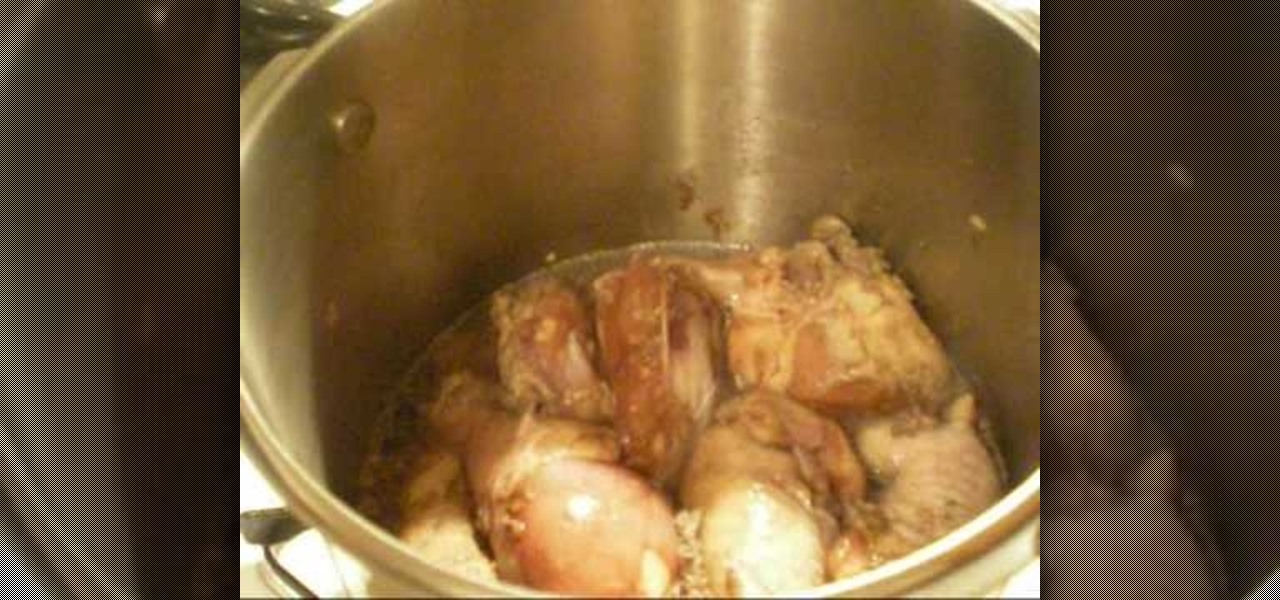
Dawn Wells, aka Mary Ann from Gilligan's Island, demonstrates a unique way to peel an Idaho potato...without the use of a potato peeler! Watch this video tutorial from Idaho Potatoes to learn how to use a knife to peel a potato, but not just a knife... you'll boil the potato then dunk it in ice cold water. Then the peel just slides off!

Orchid care isn't as difficult as you think, and to discover the orchid care secrets, Meghan Carter visited award-winning orchid breeder Dick Wells. There she discovered the best technique for growing orchids.

A wider wheelbase will improve handling and make your vehicle look more aggressive. Here they show you one option to fill out those wheel wells: wheel spacers. Check out the before and after shots. Such a small change makes a huge difference!

In this cooking how-to video Rachel and chef Mario make a tex-mex classic with a twist. Watch as they shows you how to make this quesadilla with leg meat instead of breast meat, and they also season this cheesy snack with cumin and black pepper. The cumin and black pepper give this quesadilla more Spanish than Tex-Mex.

Learn how to say "How much does this cost?" in Spanish.

Learn how to say "Do you speak English?" in Spanish.

This lesson continues the teaching of Spanish verb conjugation and it also provides practice exercises. Watch, listen, learn, and practice.

This Spanish video lesson covers adjectives and their relationship with number and gender.

This is a video lesson on greeting phrases in Spanish. Watch, listen, and repeat!

Here are 10 Spanish phrases to help you not only find a hotel room but to find one with all of the amenities you want. Subtitles are included for help with pronunciation.

In this Spanish lesson, Larry Keim demonstrates how to say the months of the year, and how to say the date, and how to say your birthday. The pace is great so you should be learning in no time.

There is no English in this lesson but sometimes that is the best way to learn! Follow along and learn how to speak Spanish with a detailed yet intermediate class based on pictures.

In this video, we learn how to talk about your daily routine in Spanish. First, you need to learn common expressions about doing things. The key verbs that talk about your typical routine include: "despertarse" (to wake up), "levantarse" (to get up), "banarse" (to bathe), and "ducharse" (to shower). These are just a few of the verbs you can use for your daily routine. Other activities include: "estudiar" (study), "cenar" (to have dinner), and "acostarse" (to go to bed). Make sure if you are u...

In this video, we learn how to speak Spanish by asking what time. The phrase, "a que hora" translates to "at what time" in English. The word "termina" means "it ends" ad "empieza" means it begins. You can ask questions using these words, such as what time a concert starts, what time school starts, what time a party begins, etc. Practice learning how to say the hours of the day in Spanish so you can respond to someone when they ask you what time it is. When answering this question, you will st...

Learning to differentiate between common nearly synonymous words in a foreign language is one of the biggest challenges inherent in learning another language. Here, Spanish instructor Professor Jason breaks down the difference between the Spanish words "muy" and "mucho". While these both seem like they mean "more" to many English speakers, one is actually an adverb and the other an adjective, so using them interchangeably can be a major mistake. Many examples and a quiz are included in the vi...

Adobo is a Spanish word for sauce, seasoning or marinade, mainly used in Latin American- and Southwest U.S.-style cooking as well as in the Philippines. The noun form "Adobo" generally describes a marinade or seasoning mix. Adobo is also a style of cooking used in Filipino cuisine. In Filipino cuisine Adobo refers to a common cooking process indigenous to the Philippines, The dish was named after the Spanish who found this indigenous cooking process that involved Stewing with Vinegar, they ca...

Larry Keim, the host of "Rolling R's", teaches Junior High School Spanish in Mesa, Arizona. He has a passion for Spanish, and he's created this video podcast to give away Spanish lessons for free. This video covers the verb hablar, which means "to speak". Use the Spanish word "hablar".

Charles Sedlak shows you one of the most fun strumming techniques in Flamenco - the Rumba. You won't be able to stop playing this Spanish style music. It's so addicting, like crack, but how would I know.

This video demonstrates how to pronounce and recite the Spanish language alphabet. From the people who brought you the Dummies instructional book series, brings you the same non-intimidating guides in video form. Watch this video tutorial to learn how to pronounce the Spanish alphabet, For Dummies.

Many communities obtain their drinking water from underground sources called aquifers. If a surface water source, such as a river, is not available, water companies will drill wells into the soil and rock to a water source below. Some homes have their own private wells and must tap into the same ground water sources. In this video tutorial, you'll what aquifers are, how they work, why they are important and, of course, how to build your own model! Build your own aquifer.

Learn how to use dowsing rods for ghost hunting. Actually, dowsing rods were more commonly used to find hidden water wells in the ground, or for finding unmarked graves. This video tutorial will show you the basics of dowsing rods.

In this video, we learn how to speak Spanish: "me gusta" (I like). First, you will need to learn how to form sentences. After saying "me gusta", you will need to say a verb that you like to do. These include: "nadar" (to swim), "practicar deportes" (to practice sports), and "estudiar" (to study). These are just a few of the many words you can use for verbs. An example of a sentence would be "me gusta tocar la guitarra" (I like to play guitar). If you would like to say you don't like to do som...

Beef stew is a classic family favorite. It's a crowd pleaser and a good standby for dinner in a pinch.

This video demonstrates how to introduce yourself in Spanish. From the people who brought you the Dummies instructional book series, brings you the same non-intimidating guides in video form. Watch this video tutorial to learn how to introduce yourself in Spanish, For Dummies.

In this how to video Chef Jean Pierre shows you how to prepare this delicious Spanish pudding. Creme Catalana is a cross between a crème caramel and a crème brûlée, but with a citrus twist. Watch and learn how to make a creme Catalana in your own oven.

Check out this video to learn how to say phrases in Spanish.

Learn how to say "Where is the toilet?" in Spanish.

Learn how to say "I would like a coffee or a room or a ticket." in Spanish.

Learn how to say "Can you drive me to the train station or the airport or the hotel?" in Spanish.

This is a video lesson on the days of the week, months, and dates in Spanish. Listen, repeat, and rewind as needed.

Looking to make a good first date impression with that Spanish-speaking girl you met? Here are 10 conversational Spanish phrases that can be used on a first date including several compliments. Subtitles are included for help with pronunciation. Speak Spanish on a first date.

Learn how to make this Spanish style breakfast omelette. All you need are eggs, onions, potatoes, olive oil, and salt.

Want to whip up a delicious breakfast that's also low in fat and high in fiber? "Delicious" and "healthy" don't seem like they'd go together in the same sentence, but they certainly do when it comes to this recipe.

Fall is going to be in full swing in just a week or two, which means the weather will soon be cooling down and the warm comfort foods will soon be heating up on stoves everywhere.

In this video, we learn how to make Informal and formal commands in Spanish. When you speak in first person singular, you will say "yo" when you speak in plural, you will say "nosotros". These are both informal or familiar forms of the word. When you are speaking to someone that is a elder, you will want to speak in formal instead of informal. Use informal mode when you are talking with friends, family, children, and anyone else you talk to in a daily basis. Pay attention if you are talking a...

In this video, we learn how to speak Spanish by describing personality. There are many words to express personality and how you are. Some of these words include "generoso" (generous), "simpatico" (nice), and "ordenado" (organized). The most common ending to words is "o", which can be used to describe yourself. Only a few words will end in "r", "e", or "a". The end of the word is important because it tells us the gender of the word. This means the adjectives will change depending on who they a...

In this video, we learn how to use reflexive verbs in Spanish. All of the reflexive verbs are related. Once you have your verb changed, you will have to change how you are saying the different words in the sentence. If you are talking about yourself, you will have to make sure you take out "es", so you aren't saying the sentence incorrectly. If you are calling yourself something, you are reflecting the verb back to yourself. I you want to say "I talk", you will say "yo habo", because you are ...

Try this Spanish recipe straight from Barcelona! They're called pinchos, and they're similar to tapas, except with pinchos, they're served with little skewers, which act as a ways of billing at restaurants. In this video recipe, you'll learn how to make your own Spanish pinchos (Spanish for spike or thorn).

How to say/pronounce 'I love you' in Portuguese, Spanish and French. Video: .









































